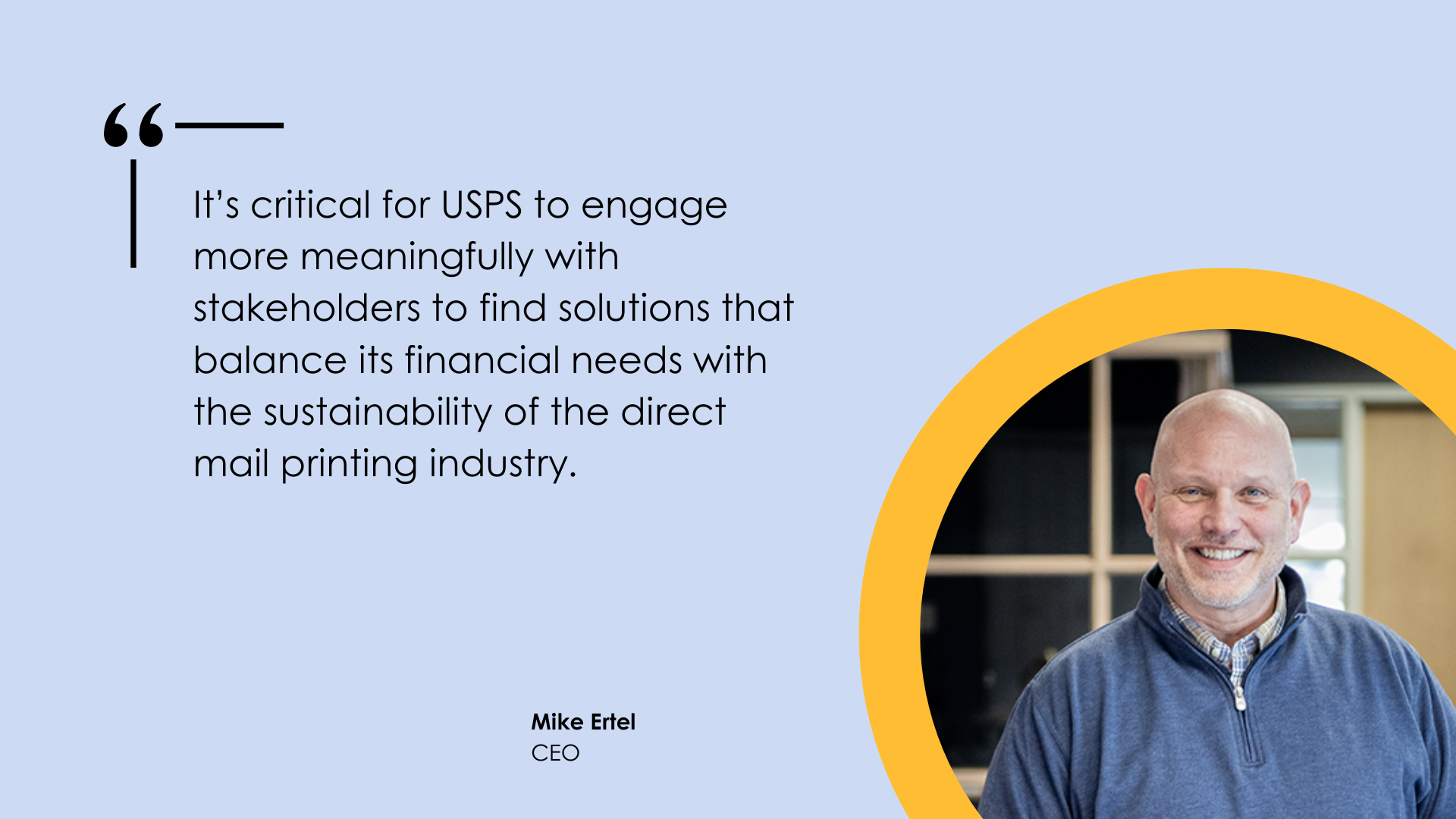Confronting USPS Postage Increases: Insights from Nahan CEO Mike Ertel
As an industry, we’ve faced many challenges over the last four years: the Covid-19 pandemic, supply chain disruptions, inflation, and a significant cycle of recent postage increases from USPS.
To thrive in the direct mail printing industry, we have had to anticipate the peaks and valleys, making resilience and adaptability crucial as we navigated these headwinds. Over the years, we’ve seen some printers and agencies struggle, leading to industry consolidation and the closure of plants as they face structural changes.

Through the ups and downs, USPS has been a valued partner by ensuring the direct mail and catalogs we produce reach our clients’ target audiences, thereby playing a vital role in enabling direct mail to remain a viable, impactful marking channel for thousands of brands.
However, over the past five years, the 5-digit SCF rate for letters has increased by 39.5%, and the Basic Carrier Route SCF rate for flats has surged by 65%. This has had a significant effect on the industry—and most importantly, on the hardworking people who depend on it for their livelihoods.
The printing industry is a critical component of the U.S. economy, employing over 350,000 people directly as well as affecting tens of thousands in the marketing industry and the many small businesses that rely on it. Each one of these jobs supports families and communities, underscoring the essential function this industry plays in the overall economy.

The recent postage rate increases have contributed to a decline in marketing mail volume, and if trendlines hold, there will be a further decline in future quarters. At Nahan, we understand these challenges and work diligently with our clients to adapt to and mitigate the impact.
In our last two articles, Brandon Jacklin, our Manager of Postal Affairs, shared strategic recommendations for mitigating costs for direct mailers and insights on how catalogers can optimize formats to reduce postage expenses. We’re confident that our depth of experience and innovative mindset will allow our clients to continue generating profitable results through direct mail.
However, these postal rate increases have far-reaching consequences, affecting not just marketers’ revenue streams but also the operational stability of suppliers within the industry. The effects ripple throughout the supply chain, impacting everything from paper manufacturers to logistics providers.
For USPS to enact balanced and effective decisions, they must understand the full scale of the impact recent postal rate increases have had on the broader economy and the livelihoods of individuals tied to this industry.
Though the purpose of the rate increases is understood, its pace and scale suggest a lack of awareness of the wide-reaching consequences, drawing legitimate criticism about USPS’s future intentions. Marketers are being forced away from the direct mail channel, and as they pull back—which decreases volume across the industry—efficiencies of scale are lost, operational costs rise, and some businesses maybe forced to close.

Companies within the direct mail printing industry are thus advocating for decisions that consider these economic realities and operational challenges facing us today. Therefore, it is critical for USPS to engage more meaningfully with stakeholders to find solutions that balance its financial needs with the sustainability of the direct mail printing industry.
The ripple effect of these increases touches lives and communities, extending far beyond immediate business concerns. The USPS should explore improving operational efficiencies, containing costs, and increasing mail volume and revenue, rather than reducing them through excessive rate increases.
Despite these challenges, our commitment remains steadfast. I have never been more confident and optimistic about Nahan’s ability to continue finding solutions for clients and ensuring the direct mail channel remains the ideal method for businesses looking to reach new customers and build loyalty with existing ones.
We love what we do because we know how effective it is in helping our clients achieve their marketing goals and grow their businesses. When they succeed, we all succeed.


